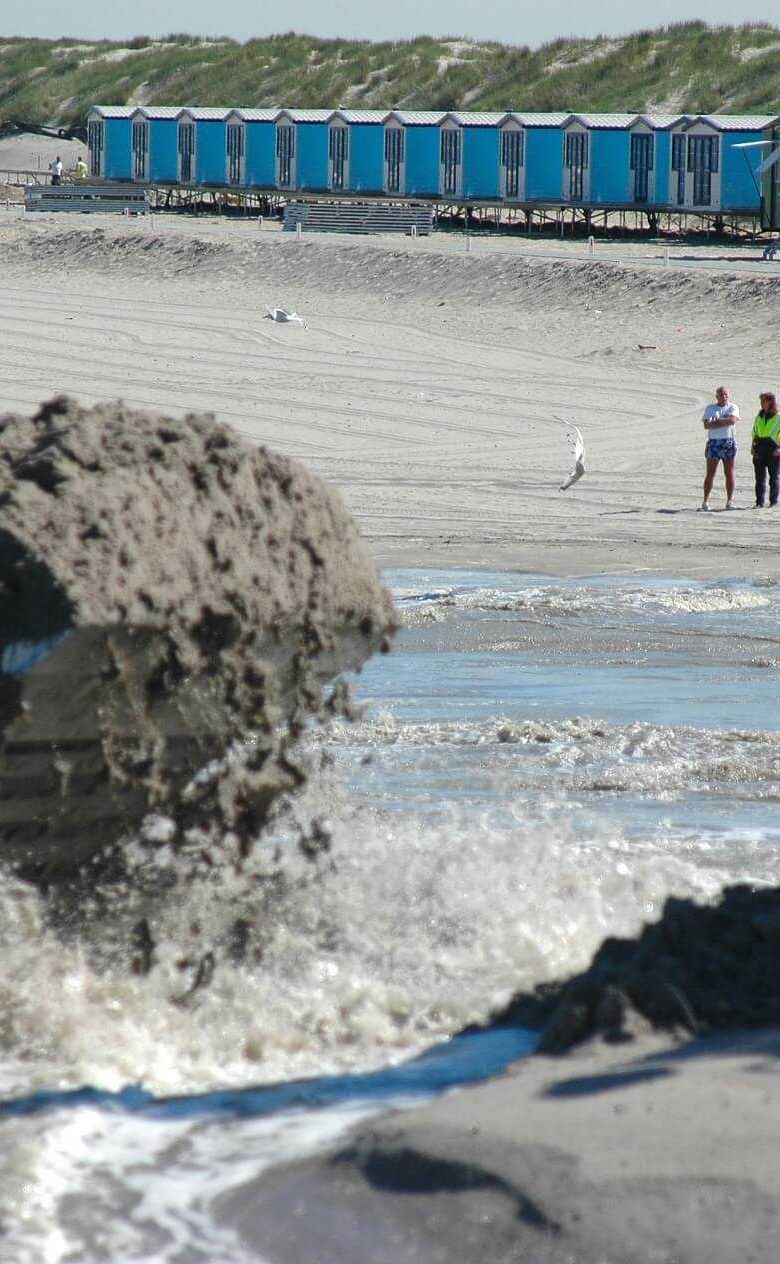Smart use of sand to extend protection against sea level rise
The possibility of a much faster rise in sea levels poses major challenges for the Netherlands. An adaptive and flexible response to future sea level rise is an innovative way to prepare for that uncertain future. One way to go about this is coastal maintenance in the form of sand nourishments. Two recent studies by Deltares and partners, one of them commissioned by the Ministry of Infrastructure and Water Management as part of the Sea Level Rise Knowledge Programme, demonstrate that there are many options available for sandy coastal management, on condition that enough sufficient sand reserves continue to be readily available.

The Netherlands maintains the coastline with nourishments. At present these add up to some 12 million cubic metres of sand every year. This is a flexible strategy that is adjusted in response to the rate of sea level rise, and which can therefore be easily up- or downscaled. The natural character of the coast is also preserved. Since 2008, the year of foundation, Deltares has provided much of the knowledge needed to plan and design those nourishments. Two new landmark studies were completed recently.
How much sand is needed?
Under the Sea Level Rise Knowledge Programme, a very extensive study took place of the quantities of sand needed to keep the coastline in place while providing adequate protection, against the background of sea level rise. Much less sand is required than has been assumed before. This is because it is now clearer where the sand from the nourishments stays in the long term. Most of this sand stays in a zone where waves still reach the bed.
By making calculations in this respect for all the types of coast in the Netherlands, Deltares was able to determine the total demand for sand (or, in effect, sediment: silt is also sometimes involved). The quantities involved are still large – billions of cubic meters of sand – but over the period of sea level rise as a whole, the picture that emerges is that a strategy based on nourishments can be maintained for a very long time.
Only part of the current volume of nourishments can be directly linked to sea level rise. At present the largest part of the 12 million cubic metres is related to tackling direct erosion at coastal locations and compensating for sand imports to the Wadden Sea. Every annual increase of one millimetre in the pace of sea level rise requires about one million cubic metres of additional sand a year to keep the coastline in place.
A prerequisite for being able to maintain this successful strategy for a long enough time is a policy for sand reserves. This requires spatial planning for the North Sea and a restrained approach to large projects and coastal expansion that need large amounts of sand.
Towards emission-free nourishments
A second study, which was conducted in a knowledge alliance with Delft University of Technology, Rijkswaterstaat and the Dutch Association of Hydraulic Engineers, the ‘Dutch Coastline Challenge’, describes the possibilities for making nourishments themselves more sustainable. It looked at cutting carbon and nitrogen emissions, and more ecological gains through coastal maintenance.
A key recommendation is to see how the leap to sustainability can be accelerated with additional efforts in nourishments and knowledge about the sandy Dutch coast. The project demonstrated very clearly that collaboration involving government, knowledge institutes and business develops knowledge faster and produces practical recommendations. Follow-up to bring sustainable nourishments closer can also be managed best through a knowledge alliance of this kind.
In conclusion
Both studies show that the current strategy for the sandy coast can be maintained for a long time and can also be more sustainable. A decision to change this strategy does not need to be made at this time. It can be postponed until we have more and better knowledge. That is good news.
Deltares has conducted studies in the past in the context of the Sea Level Rise Knowledge Programme, looking at areas such as the consequences for fresh water and possible solutions for adapting to climate change.

